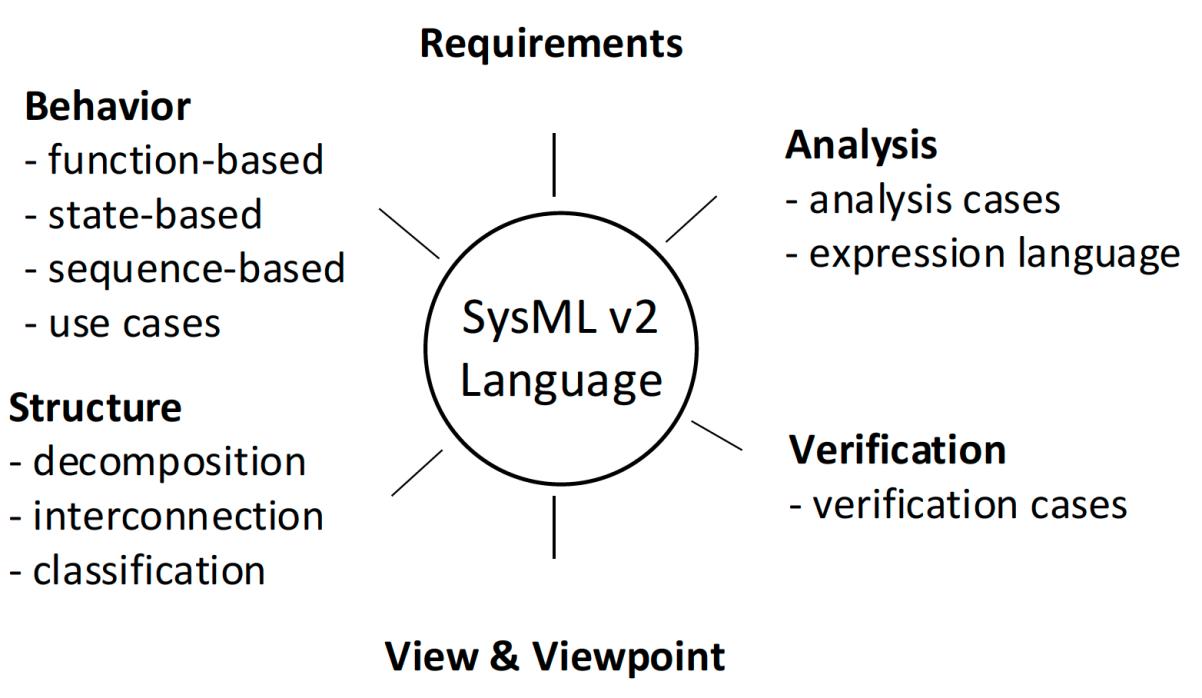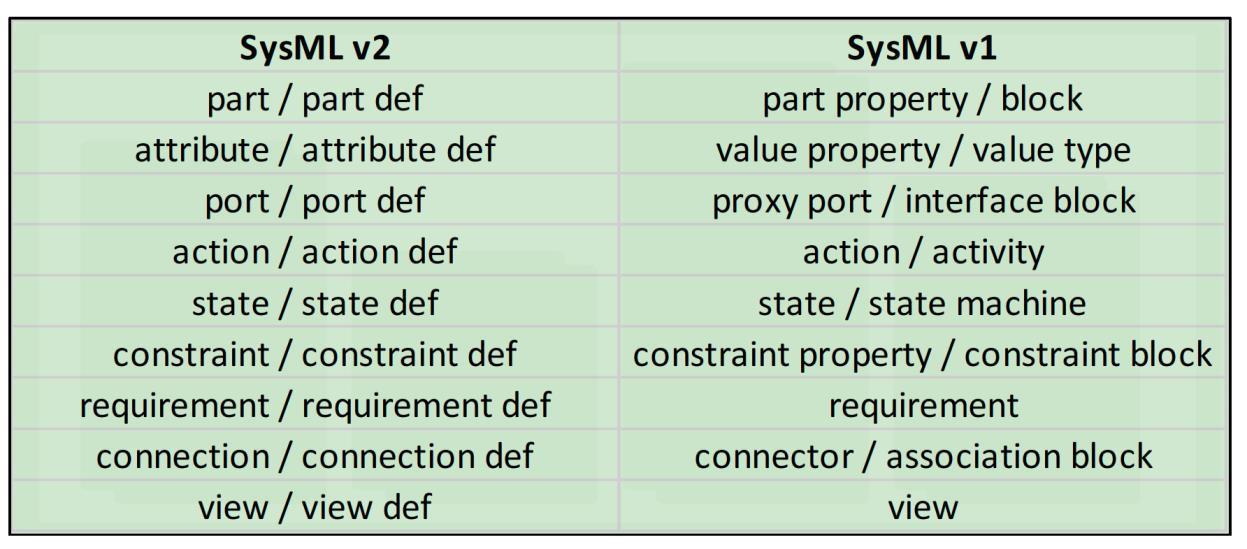
6 minute read
What’s Happening with SysML v2?
by Robert J. Halligan FIE Aust CPEng IntPE(Aus) Project Performance International
Email : rhalligan@ppi-int.com
Authored for PPI SyEN.
A very welcome update on the status of SysML v2 was given at the INCOSE International Workshop (IW) on January 30th, 2022 by the SysML v2 Submission Team (SST). This report is based on a presentation at the IW delivered by SST Co-Lead Sanford Friedenthal. [1] SysML v2 is intended to support Model-Based Systems Engineering (MBSE), which is defined by PPI as “the formalized application of modeling to support system requirements, design, analysis, verification and validation activities, beginning with problem definition and continuing throughout the development and later lifecycle stages.” The INCOSE definition of MBSE is very similar: “the formalized application of modeling to support system requirements, design, analysis, verification and validation activities beginning in the conceptual design phase and continuing throughout development and later life cycle phases.”
One of the objectives of SysML v2 is support to digital transformation, not only with models and simulations, but also with their integration with other engineering data on a lifecycle basis – the digital thread. The digital thread is a data-driven architecture that links information generated from across the product lifecycle. The digital thread is envisioned to become the primary or authoritative data storage and communication vehicle for an organization’s products at any instance of time.
SysML was first conceived in 2001 and was released in 2006 as SysML v1.0. The language is currently at v1.6, with work in progress on v1.7. Although SysML v1 has gained a following among engineers, the language has also disappointed many with its software, not general systems orientation, issues with executability and the inability to exchange models between tools of different tool vendors. These last two points were major drivers to the SysML v2 project, reflected in requirements for the language, but not accomplished in SysML v1. The steep learning curve associated with SysML v1 has also held back its widespread adoption, we believe. Opportunity to improve SysML v1 led to the Object Management Group, the home of SysML, releasing in December 2017 a RFP for SysML v2 and the establishment of the SysML v2 Submission Team (SST) to develop SysML v2, with the objectives of enhancing: • Precision and expressiveness of the language • Consistency and integration between language concepts • Interoperability with other engineering models and tools • Usability by model developers and consumers • Extensibility to support domain specific applications, and with a migration path for SysML v1 users and implementors. Key elements of SysML v2 are: • A new metamodel, grounded in formal (rigorous) semantics, and not constrained by UML but preserving the UML modeling capabilities applicable from a systems perspective
• Robust graphical, tabular and textual visualizations based on flexible view & viewpoint specification and execution • Standardized Application Program Interface (API) to access the model. The metamodel specifies the core concepts of the language using formal semantics. A systems model library instantiates for use the core concepts from the metamodel. The user creates the user model from content of the systems model library. The separate API enables access to the user model in a standard way. The expressiveness of the SysML v2 language is overviewed in Figure 1. [1]

Figure 1: Overview of SysML v2 Expressiveness The SysML v2 Part and its Definition replace the SysML v1 part property and Block. SysML v2 parts are characterised by information that includes:
• name: • attributes: • ports (interfaces): • performs actions: • exhibits states:
The logic and soundness of this characterization is self-evident. SysML v2, as mentioned above, has a textual syntax that unambiguously corresponds to the graphical syntax. This bimodal capability offers many advantages for communication, including additional options for model interchange between organizations and between tools. State-based modelling capability is similar to that provided by Harel statecharts [2], with each state defined in terms of:
• condition for exiting one state and entering another state (transition) • action (response) upon entry to the state • action to be performed in the state • action upon exit from the state • constraints that apply while in the state.
The logic and usability of SysML v2 is improved considerably by consistent use of definitions and usage, by way of Definition and Usage elements. A Definition element defines an element such as a part, action, requirement, attribute, state, constraint, connection or view. A Usage element is a usage of a Definition element in a particular context. This pattern is applied consistently throughout the language. SysML v2 accommodates Product Line Engineering (PLE) and other aspects of engineering practice involving variants. All Definition and Usage elements can be defined as variation points. A variant represents a particular selection at a variation point. A selection at one variation point can constrain selections at other variation points. A particular system can be configured by making choices at each variation point consistent with the specified constraints. This capability of SysML v2 is extremely valuable and brings the language into the 21st century, in our view. A partial mapping of SysML v2 terminology to SysML v1 is shown in Figure 2, [1] followed by a comparison of SysML v2 with SysML v1.6.

Figure 2: SysML v2 to SysML v1 Terminology Mapping SysML v2 is simpler to learn and use: • Systems engineering concepts are designed into the language metamodel versus added-on • Consistent application of definition pattern and usage pattern applies • Terminology is more rational and consistent throughout the metamodel • Ability to decompose parts, actions, … applies
SysML v2 is more precise: • Precise textual syntax and expression language • The language has a formal semantic grounding • Requirements as constraints SysML v2 is more expressive: • Modeling of variants • Analysis cases • Trade-off analysis • Individuals, snapshots, time slices • More robust quantitative properties (e.g., vectors, …) • Query/filter expressions • Replication, missing in SysML v1, included in SysML v2 Activity Diagram
• Executable • More extensive metadata overall
SysML v2 is more extensible • Simpler language extension capability, based on model libraries SysML is more interoperable • Standardized API with conformance tests • OSLC • Graphical, textual and tabular representations • Cross-project element referencing. In short, PPI predicts that SysML v2 will be a game changer, everything that SysML v1 was intended to be, and much, much more. The final submission of SysML v2 by the SST to the OMG is expected to take place in the July to September, 2022 timeframe, with finalization of the OMG-approved SysML v2 Specification anticipated a year later. Implementation of SysML v2 tools by the tool vendors is expected to take place through 2022 and 2023, with commercial tool releases progressively through 2023. SysML v2 resources understood to be available include a monthly release repository that contains: • Release content • Specification documents (for KerML, SysML and API) • Training material for SysML textual notation • Training material for SysML graphical notation • Example models (in textual notation) • Pilot implementation • Web access to prototype repository via SysML v2 API • Web access to Tom Sawyer visualization tooling. Additional resources include:
• Open-source repository: • Google group for comments and questions: (to request membership, provide name, affiliation and interest).
References:
[1] Friedenthal, Sanford, “SysML v2 Submission Team (SST) SysML v2 Update”, 2022 Annual INCOSE
International Workshop, presentation [2] Harel, David, “Statecharts: a visual formalism for complex systems”, Elsevier, Science of Computer
Programming, Volume 8, Issue 3, June 1987, Pages 231-274




